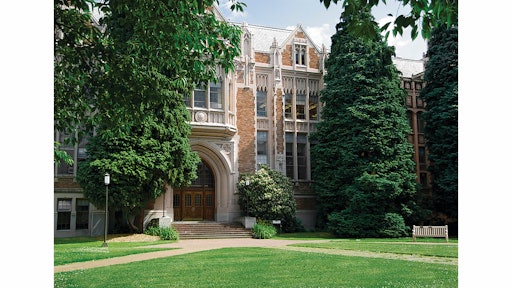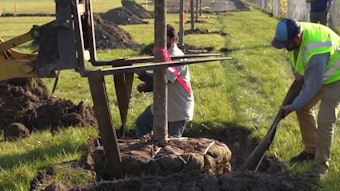
Winter months may present weed control challenges for warm-season turf, especially for dormant bermudagrass and zoysiagrass. Annual winter weeds like chickweed, henbit and annual bluegrass provide a sharp contrast to straw-colored dormant turf and become unsightly if left untreated. At this point in the weeds’ growth stage, a post-emergent herbicide will be needed to control the problem. Ed Solon, regional technical manager for TruGreen, has provided tips on dealing with weed control during the winter months.
Post-emergent Weed Control
Weed growth is slower in colder weather, limiting herbicide absorption and movement and resulting in poor weed control. This is especially true when daytime temperatures are below 50° F and nighttime temperatures drop below freezing (32° F). Keep in mind that warm periods followed by several days of cold temperatures with low temperatures near freezing will again slow weed growth and may produce poor results. Expect better weed control once the weather warms up, but for optimum control during the winter months it is important to select the right herbicide for the winter weeds, understand how it works, and follow label instructions.
Effective post-emergent weed control requires the herbicide to contact the weed and absorb into the weed to disrupt the growth process. Due to weather conditions, young, actively growing weeds are easier to control than mature, slower-growing weeds. In some cases, dealing with certain weed species may require more than one herbicide.
Pre-emergent Crabgrass Control
Pre-emergent can also treat spring crabgrass during winter months. If timing and weather permit, you can include this application at the same time as other herbicides.
It is important to apply pre-emergent for crabgrass before germination or before crabgrass reaches the two-leaf stage. Crabgrass germination occurs when the soil temperature reaches 60° to 65° F for three to four consecutive days at a 1.3-inch depth. This condition generally occurs when night temperatures exceed 55° for three to four consecutive nights. Adequate soil moisture, light intensity and abundant sunlight near the soil are also needed for germination to occur.
It is always important to follow label instructions, specifically on application rates and timing. Consider contacting an expert such as TruGreen to have your property assessed and customize a unique plan to help control your weeds.




























